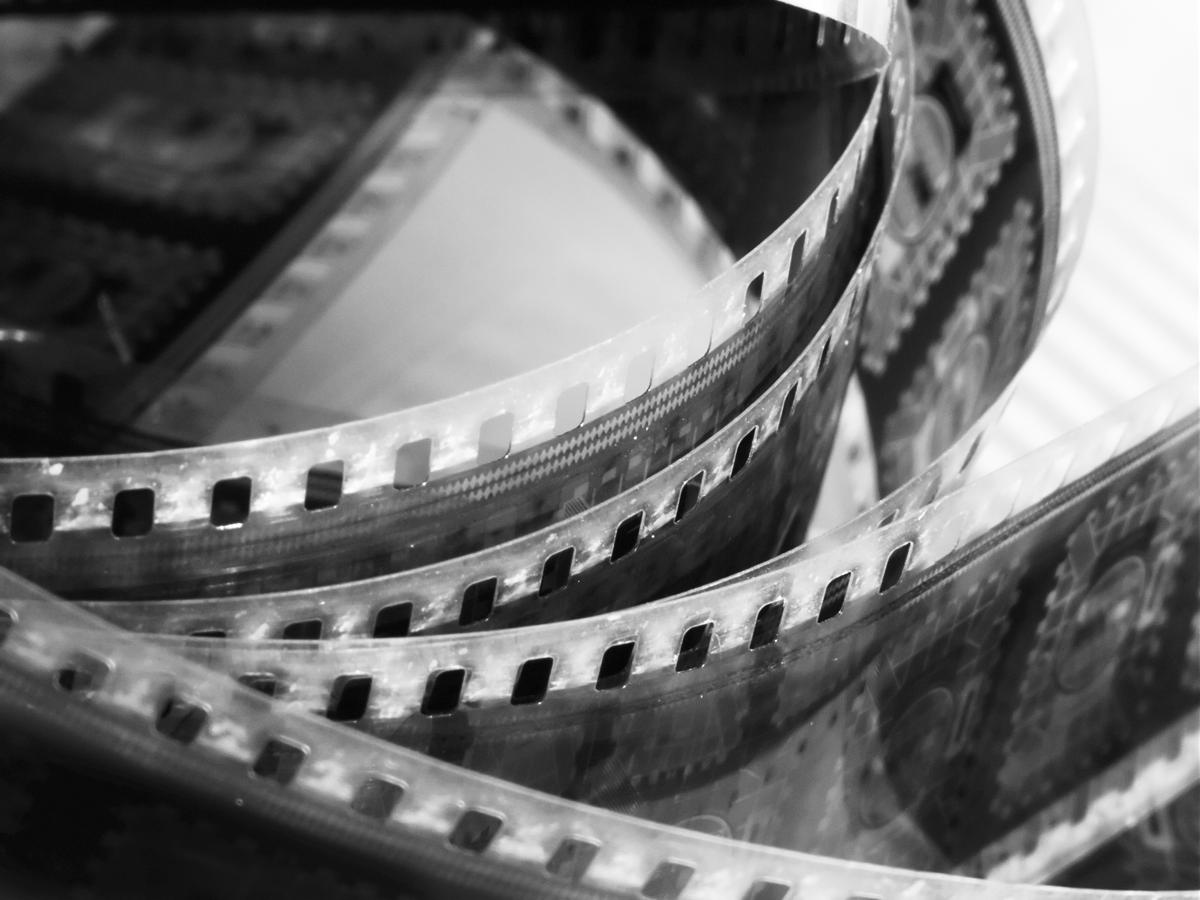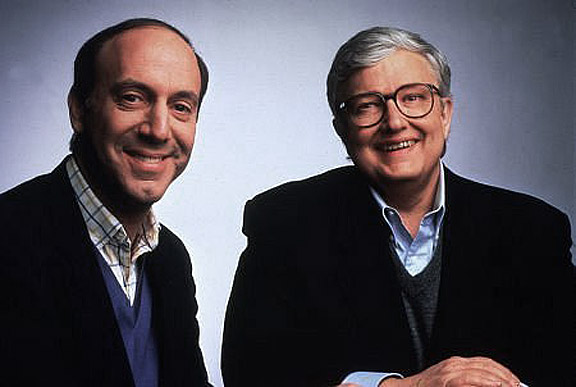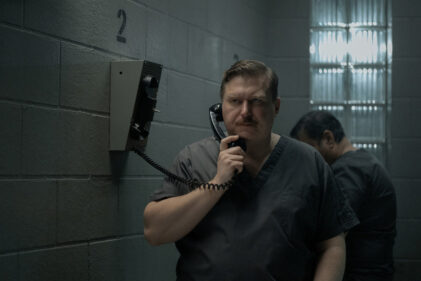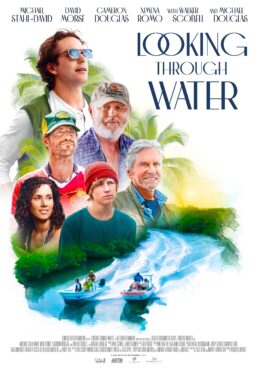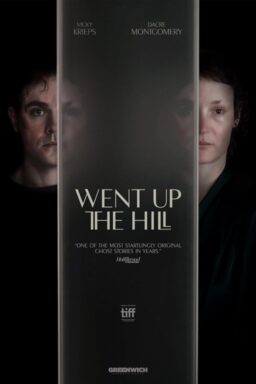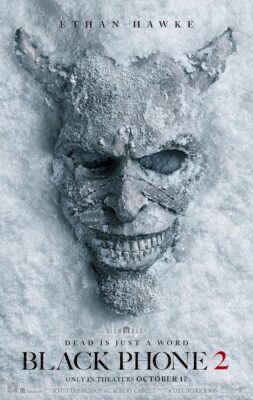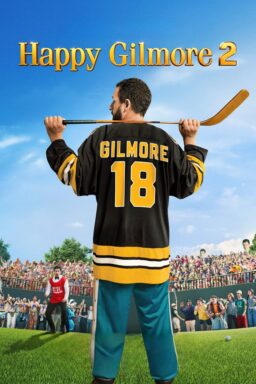“Well there are many kinds of realities of our lives, and the reality has many layers, it was made up of numerous layers. And documentary making is like peeling off those layers one by one. And I don’t think they will be peeling off by themselves. And after you peel the first one, you can see another layer beneath it…and then we have to come up with another method to peel it off.”—Kazuo Hara, in “The Story of Film: An Odyssey”
I should have known I was in trouble midway through the second episode of Mark Cousins’ epic “The Story of Film: An Odyssey” (2011), when his narration describes Hollywood as “a bauble,” and the camera panning across an L.A. landscape stops on a red Christmas bauble hanging from a tree branch. No, really.
Cousins’ fifteen-hour documentary, based on his 2005 book of the same name and nominally dedicated to what he describes in its DVD booklet as “the history of innovation in the movies,” is airing in fifteen installments this fall on Turner Classic Movies. It might be worth asking why. Turner’s June press release heralding this Fall programing coup described “The Story of Film” as a “bold 15-part love letter to the movies,” and TCM senior vice president of programming Charles Tabesh raved, “Mark Cousin’s ‘The Story of Film: An Odyssey’ is a fascinating, brilliant documentary series that takes viewers beyond Hollywood to trace the history of cinema on a global scale, and it offers us the perfect opportunity to explore an incredibly broad range of films from around the world. With TCM in its 20th year, this is the ideal time to exhibit this important series, curated with an expansive lineup that includes well-known and highly acclaimed masterpieces, along with underappreciated, yet important and influential films. More than anything we’ve ever done before, this 15-week event represents TCM’s deep commitment to the history and celebration of film.”
Tabesh may have a rooting interest in the film’s success, but he’s not alone in his praise. The New York Times‘ A.O. Scott, reviewing the film when it played at the Museum of Modern Art in 2012, described it as “exemplary, useful and sometimes thrilling.” In Newsday, Diane Werts previewed the TCM airing and called the movie “revelatory and arousing.” And critic Shawn Levy (author of many a brilliant pop culture history himself) opined that, despite occasional repetitive lapses and moments when “Cousins’ preferences and biases puzzle and even irritate,” “The Story of Film” is still “smart, entertaining, illuminating and addictive viewing…a tour through a museum with a deeply passionate and engaging guide.” The documentary played at the 2011 Toronto International Film Festival, and received a DVD release from Music Box Films in 2012, an imposing five-disc slab of a box with a 43-page booklet exhaustively detailing the film’s production and reception. It’s all enough to cast Cousins’ cri de coeur about film history—”The playing field is not level. The bullies with massive marketing budgets force their movies on us, whether they are good or not, thus restricting our choice”—in an unintentionally ironic light.
And make no mistake—the maverick outsider image is central to both the structure and the marketing of “The Story of Film.” The movie’s desire to de-center America and Europe as the centers of film history is admirable, and its research work is impressive, but its constant, back-patting insistence that any of this is radical is a reminder that nothing dates faster than revolution. Judy Balaban, daughter of Paramount studio executive Barney Balaban and one-time wife of Montgomery Clift, is interviewed about HUAC in the film, but in doing so, manages to put her finger on the problem with Cousins’ methodology: “I look at periods where the movies seem to be ahead of everything, and then there are periods where they seem to be behind everything else in the world.”
On the Indiewire blog, Ryan Lattanzio raved, “‘The Story of Film’ is not your run-of-the-mill film studies survey.” An ungenerous soul might suggest that such a reading means its author hasn’t set foot in a film studies classroom in the last forty years, since so many of Cousins’ formal, historical and theoretical goals were long ago advanced by the academy. A more generous reading is that such a statement indicates the unfortunate lack of dialogue between academic and popular film criticism: what A.O. Scott admiringly calls “an invigorated compendium of conventional wisdom” might more accurately be called a manifesto of the already-written, a set of supposed rhetorical bombshells that exploded decades ago in other cinephilic spaces. As another, much better film history put it, the parade’s gone by.
That’s not to say there aren’t some interesting things happening in “The Story of Film.” If nothing else, the sheer scope of the enterprise is staggering. Cousins and his producer John Archer spent six years shooting in more than ten countries and on every continent, gathering dozens of interviews, and finding and editing 1000 clips from films of all kinds (to say nothing of dealing with the vagaries of their funding from multiple sources), in order to make a 900-minute movie. Cousins’ passion for Iranian filmmakers like Abbas Kiarostami and Samira Makhmalbaf is palpable; his tracing of threads across different national cinemas and periods leads to valuable recuperations and arguments on behalf of everyone from Egyptian filmmaker Youssef Chahine (who Cousins calls the father of African cinema) to Chinese actress Ruan Lingyu; and he provides broader mainstream exposure to filmmakers like Charles Burnett, Shin’ya Tsukamoto, Matthew Barney, and Derek Jarman. Cousins and his editor Timo Langer sometimes make wonderfully poetic links in a single cut: the leap from a discussion of Terence Malick and Heidegger to the “Tomorrow Belongs To Me” sequence of “Cabaret” is especially cheeky. And in episode ten, “Radical Directors of the ’70s Make State of the Nation Movies”—easily the single best 63 minutes in “The Story of Film”—Cousins comes alive like he does in no other part of his epic, rhapsodizing about everyone from Fassbinder to Wenders to Ken Russell to Margarethe Von Trotta in a manner that made me want to overload my Netflix queue with everything he was excerpting.
With all the good in the film, and the admirable hard work its packaging never tires of reminding you about, why did I end up disliking it so intensely? Why, when faced with the prospect of watching yet another episode in order to finish this piece, did I sigh and trudge up to my office, as if headed into certain doom? Was it just the grating timbre of Cousins’ narration, the monodrone that makes his pieties seem ever more smug? The way in which the large scale of the thing makes it feel like the documentary equivalent of a late-period Peter Jackson film, with all the rhetorical bombast and durational excess that comparison implies?
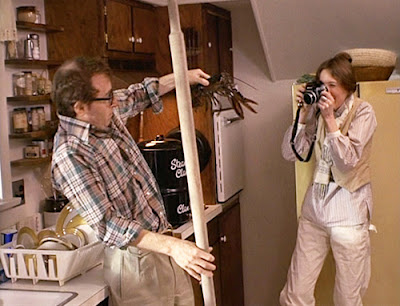
In part, it’s the strange details and tiny quirks that dot the project. There’s the bizarre statement in episode nine, in regards to the lobster-chasing scene in “Annie Hall,” that “cooking isn’t very New York”; the casual assertion that characters in the modern section of “Intolerance” are wearing “jazz-era suits,” which must have been quite the avant-garde fashion coup in 1916, a year before the first jazz record was made; and the rather odd and reductive description of Octave in “The Rules of Game” as an “unemployed playboy.”
But these are small moments, occasional questions of interpretation which annoy but can be passed through like seaweed during a swim: it’s slimy but you get past it. Their impact on this “history of innovation” will vary depending on your own personal speed in relation to this material. But here’s another one: in that same episode nine cited above, he describes “Chinatown” as having “muted ’30s color.” I would disagree—for me, part of the atmosphere of that film is how the pale tan of Jake Gittes’ suit plays off of the striking blues and greens of the landscape that functions as the story’s literal and metaphorical battleground—but even setting aside interpretive difference, there’s the whole question of what “muted ’30s color” means. Is he talking about the two-strip Technicolor of the 1920s, the red-green process that resulted in the vibrant pops of color in something like 1925’s “Phantom of The Opera”? Early ’30s developments of the process which lead to the grandly artificial color of something like “The Mystery of the Wax Museum” (1933)? Or the three-strip process which, after “Becky Sharp” (1935), slowly became the Hollywood standard? It was certainly a subtler process, that allowed for a wider range of gradations, but a cursory glance at “Sharp,” or other ’30s Technicolor films like “A Star Is Born” (1937), “The Adventures of Robin Hood” (1938), “Snow White and the Seven Dwarfs” (1937) or “Gone With The Wind” (1939) suggest a process that was rarely used in a “muted” way.

Too inside baseball, too techie, too semantical? How about this one? Mourning the career of post-“Citizen Kane” Orson Welles, Cousins makes the claim that Welles “never directed for any of the four major studios.” Four major studios? There’s a phrasing choice that sends up a red flag—most histories of the Hollywood studio system posit at least five major studios between 1930 and 1960, with several other “major minors” running parallel to the majors. Which studios fit these categories is sometimes debated (although most histories note some combination of MGM, Warner Brothers, RKO, Paramount and Twentieth-Century Fox, with Universal, Columbia, United Artists and David O. Selznick Productions somewhere in the mix). But even setting aside the cherry-picking of the numbers, Cousins is simply wrong: Welles made “The Lady from Shanghai” for Columbia in 1947 and “Touch of Evil” for Universal in 1958 (by which point the once struggling studio had grown into the biggest powerhouse in the industry). Neither of these productions was carefree, and he didn’t have the total control his RKO contract had guaranteed him on “Kane,” but Cousins’ narrative insistence on this point betrays both a lack of interest in the details of studio history and a willful recycling of Romantic cliche about Welles’ career.
Too America-centric? How about this one? After describing the French New Wave as a cinematic “carpet-bombing,” and accompanying that description with the image of a mushroom cloud (no, really), Cousins manages to talk about the work of François Truffaut and Jean-Luc Godard without once mentioning their lives as critics, or the manifestos of Cahiers du Cinema that were so instrumental in defining the larger political aesthetics of the movement. For me, it’s the most breathtaking lapse in the whole film, and one that feels revealing: even as he draws on many of the ideas of “A Certain Tendency of The French Cinema” and “Cinema/Ideology/Criticism,” he fails to cite the sources, a fate that also befalls Susan Sontag’s “Fascinating Fascism” and the work of Pauline Kael (whose work is cited only as “an article in The New Yorker“). Thankfully, Andre Bazin gets a shout-out, and so does Fernando Solanas and Octavio Getino’s “Towards A Third Cinema,” the 1969 manifesto that had a huge impact on alternative cinemas around the globe (Roland Barthes’ punctum is also mentioned, and conflated with “Third Meaning”).
Of course, Truffaut and Kael may have had Cousins’ socio-aesthetic number. In “Fantasies of the Art-House Audience” (1962), Kael pinpointed a particular problem: “I would like to suggest that the educated audience often uses ‘art’ films in much the same self-indulgent way as the mass audience uses the Hollywood ‘product,’ finding wish fulfillment in the form of cheap and easy congratulation on their sensitivities and liberalism…the audience for ‘Hiroshima Mon Amour’ feels virtuous because they want to buy peace. And the question I want to ask is: who’s selling it?”
Along the same lines, in his “Certain Tendency” piece, Truffaut had negatively defined a “Tradition of Quality” infecting both French filmmaking and its audiences in 1954, infected with fake “psychological realism” and the forced darkness of current cultural mores, and driven by screenwriters: “To their way of thinking, every story includes characters A, B, C and D. In the interior of that equation, everything is organized in function of criteria known to them alone. The sun rises and sets like clockwork, characters disappear, others are invented, the script deviates little by little from the original and becomes a whole, formless but brilliant: a new film, step by step makes its solemn entrance into the ‘Tradition of Quality.'”
Here’s another, more current take on the problem “The Story of Film” represents. On a recent episode of “The Cinephiliacs” podcast, critic and video essayist Kevin B. Lee spoke of his frustrations with a certain strain of video essay: “It’s really funny, because the video essay is barely, like, five years old, but we’re already starting to see these formulas coming to play. And for me, the number one formula, like the bread-and-butter of video essays, is the scripted video essay with video clips that kind of serve as illustrations to the voiceover. So it’s like, what I mean by this is that the person has come up with the script first, ahead of time. You know, just sort of written out what they want to say, as if it was a text essay, an article, a blog entry. So basically, the words come first, and then it’s just a matter of, you know, it’s almost like you’re filling in a puzzle—you’re taking the pieces of the video from the film, cutting up the clips, and just putting them in their proper place, so that they properly illustrate whatever is being said.”
The question here isn’t just one of erroneous details or varied interpretations, but the frameworks into which those details are placed, and which thereby define and re-center them. They may be separated by sixty years, but the methodologies Truffaut and Lee are describing share many of the same formal and pedagogical goals: control, familiarity, formula, epistemological certainty (to paraphrase a line from “Sunday In The Park With George,” there’s no surprise). And without that surprise, what Kazuo Hara, in that epigraph above, refers to as the constant reformulation of methodology in relation to revelations, what’s the point? Or, as Kael’s comments suggest, is that recycling of tropes, that predictable version of “complexity,” part of the contract with the audiences a piece like “The Story of Film” hopes to reach?
In so many ways, despite its watered-down British Cultural Studies approach to cinema, “The Story of Film” succeeds precisely in proportion to how little it challenges the shibboleths of its audience. Strange remarks like “Most Hollywood films of the time were seen from the man’s point-of-view” (in relation to “The Gold Diggers of 1933”) can pass by—despite the fact that the thirties were arguably the greatest period for female stars in all of Hollywood history—because it reinforces his overdetermination that Hollywood is invested in the “bauble,” and is thus more dismissible: “what denial…what eugenics” (no, really). Cliches like “old-style conformist filmmaking” are needed in order to create the necessary contrast with various sixties and seventies new waves, no matter how much prior contradiction and complexity such a sweeping statement sweeps away. Symbolism is overvalued, because symbolism can be easily read, digested and celebrated (or condemned). Words like “honest,” “direct,” “social” and “real” are simultaneously privileged with meaning and rendered hopelessly inert, their meanings shifting depending on the aesthetic and ideological needs of a given moment in the documentary. And when Cousins very seriously describes William Friedkin’s Barnumesque self-promotion (“I have my finger on the pulse of America”) as “nine words [that] killed the complexity of New Hollywood,” he is not just recycling a cliché as worn out as the PowerPoint-like interstitials that dot his movie, but playing to the crowd as much as the man he condemns, even if it’s a different crowd.
The irony, of course, is that even as Cousins rides out to slay killed dragons, there’s a whole set of critics, bloggers, podcasters, video essayists and academics doing wonderfully creative work, without nearly the same institutional support and acclaim. Whether it’s writers like Farran Smith Nehme (a.k.a. the “Self-Styled Siren”), Sheila O’Malley and Dave Kehr on Classic Hollywood and international cinema; Kimberly Lindbergs on sixties cinema and pop culture; Girish on the vagaries and varieties of academic film criticism; category-dodging film bloggers like Kenji Fujishima, Bill Ryan and Dennis Cozzalio; film critics and multi-media artists at sites like Slant, The Dissolve and Grantland; critics of contemporary cinema like Glenn Kenny, Keith Uhlich, Manhola Dargis, Kent Jones, Ignatiy Vishnevetsky, and Tom Carson (with an honorary mention to the website of the retired Jonathan Rosenbaum, whose postings of reviews from decades ago still feel as fresh and imaginative as anything being written this moment); video artist/writer hybrids like Kevin B. Lee, Christian Keathley and our own Matt Zoller Seitz; podcasters like Peter Labuza, Matt Singer and Alison Willmore; academics playing with form, like Lesley Stern, James Naremore, Dudley Andrew, Robert Ray, and Rashna Richards; the wonders that appear in places like Film Comment, Bright Lights Film Journal, Framework, Screen and Film Quarterly; the reprinting and rediscovery of Andrew Sarris, James Agee, V.F. Perkins, Peter Wollen, and the Surrealists, among others; the superb bloggers at Turner Classic Movies’ own “Movie Morlocks” blog; or, indeed, the tireless archivists and programmers at TCM who are programing more than 100 movies in conjunction with “The Story of Film” (which is easily the best and most important result of its TCM airing)—almost against the odds of the publishing industry, the academic market, and the ever-shifting ideological pressures of the moment, we live in a moment of great film writing and text-making about cinema. That such work deserves a better, more stable environment in which to grow and develop is an undeniable and urgent problem, but there’s certainly no lack of brilliant thinking about the shapes, details, institutional pressures, and technological possibilities of movie discourse. In the future, this work will be the truly exciting and innovative story of film, a space of many stories, many realities, and (to paraphrase Hara) many layers.

